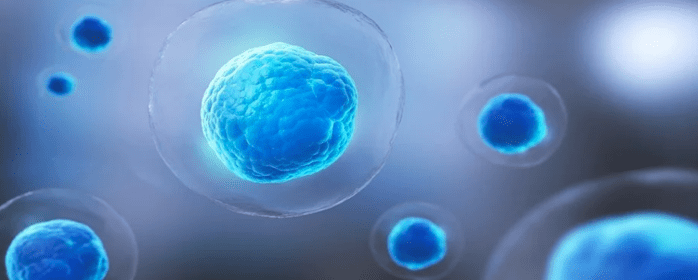Systemic lupus erythematosus (SLE) is a common multisystemic autoimmune disease that often results in multi-organ damage when left untreated. Currently affecting over 1.5 million Americans, the etiology and pathogenesis of SLE continue to remain unclear.
At present, glucocorticoids and immunosuppressants are the most prescribed course of therapeutic treatment and mostly as a way to manage and treat symptoms of SLE, not the cause itself.
Considering that the etiology and pathogenesis of SLE are accompanied by immune disorders including abnormal proliferation, differentiation, and activation and dysfunction of T cells, and that mesenchymal stem cells (MSC) and MSC-derived extracellular vesicles (EVs) play important roles in the immunity process, researchers are increasingly turning their attention to MSCs and EVs as potential therapeutic treatment options for SLE.
In this review, Yang et al. examine the immunomodulatory effects and related mechanisms of MSCs and EVs in SLE with hopes of better understanding SLE pathogenesis and guiding biological therapy.
Examining the potential use of MSC and MSC-EVs in SLE treatment the authors found some studies have established that MSCs reduce adverse effects of immunosuppressive drugs and when combined have demonstrated distinct effects on T cell activation and bias.
Additionally, Yang et al. report that MSCs are able to participate in the immune response in two distinct ways: paracrine effect and directly through cell-to-cell interaction. Since reconstruction of immune tolerance and tissue regeneration and repair are required parts of SLE treatment and since MSCs possess high self-renewal ability, rapid expansion in vitro and in vitro, and low immunogenicity, allogeneic MSC transplantation has demonstrated strong evidence for the therapeutic potential of MSC in SLE.
Besides the ability to repair and regenerate tissue, MSCs, and MSC-EVs have strong anti-inflammatory and immunomodulatory effects, making them a potentially ideal treatment option as part of a therapeutic strategy for SLE. Considering that MSC-EVs have similar biological functions with MSCs, but are also considered cell-free, the authors point out that MSC-EVs could be the better choice for SLE treatment in the future.
Despite the potential of MSC and MSC-EVs, Yang et al. point out that genetic modification, metabolic recombination, and other priming of MSCs in vitro should be considered before MSC/MSC-EVs application for SLE treatment. The authors also recommend further clinical evaluation of the time of infusion, appropriate dosage, interval of treatment, and long-term safety of MSC/MSC-EVs in the treatment of SLE before any form of the combination is used as a treatment option.
Source: “Immunomodulatory Effect of MSCs and MSCs-Derived Extracellular ….” 16 Sep. 2021, https://www.ncbi.nlm.nih.gov/pmc/articles/PMC8481702/.


 St. Petersburg, Florida
St. Petersburg, Florida
